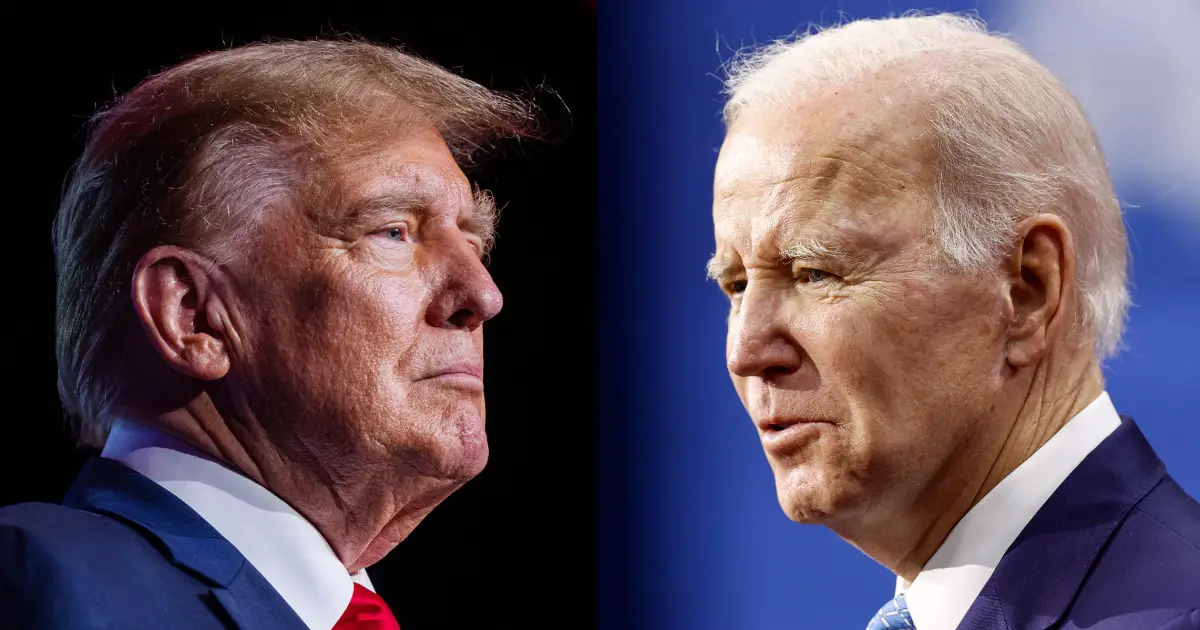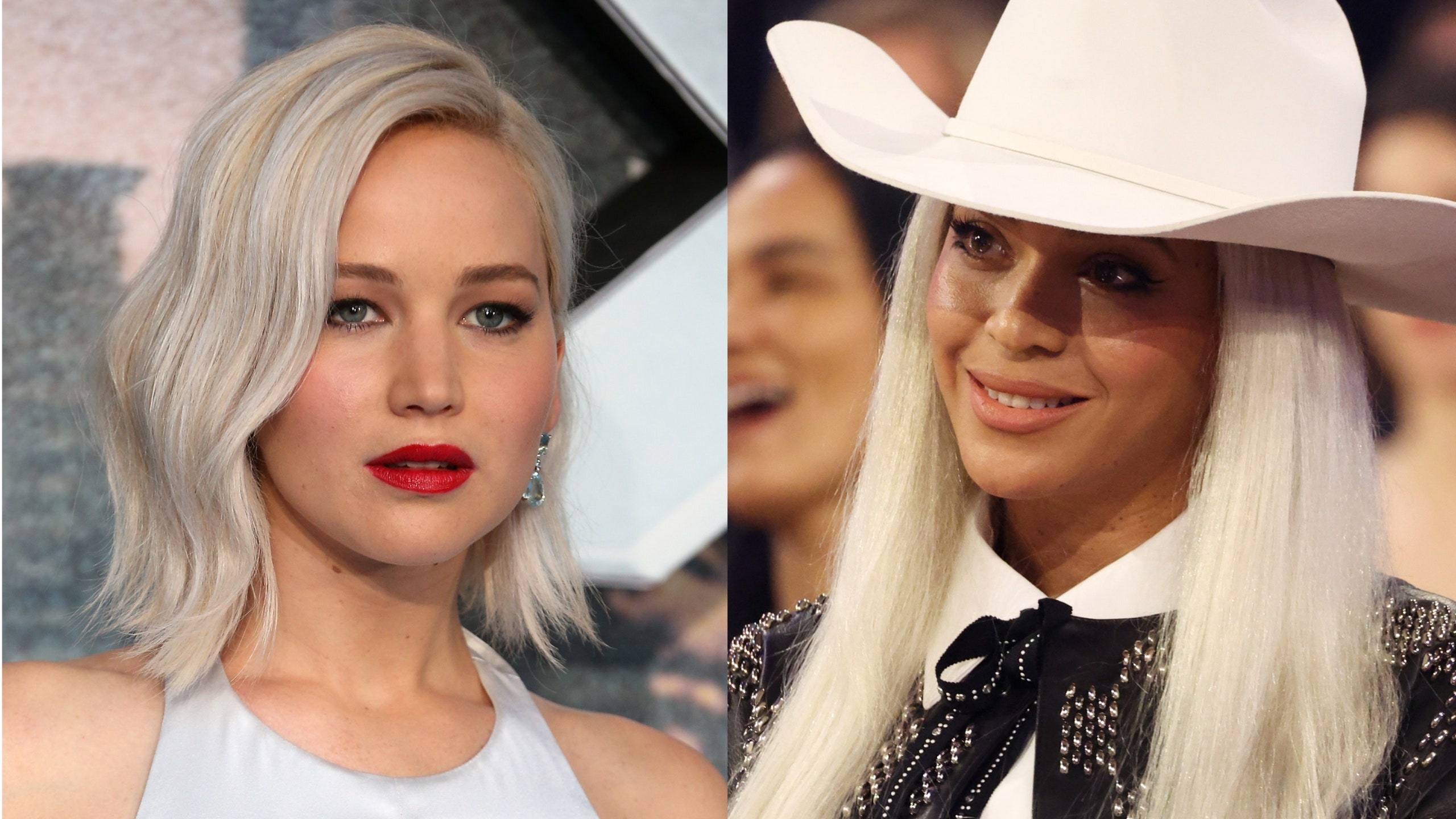Six months from Election Day, American voters are confronting a presidential race that looks stable at a glance — and is roiling with uncertainty beneath the surface.
For the first time in more than a century, Americans will choose between two presumptive major-party nominees who have already served as commander-in-chief: President Joe Biden and former President Donald Trump.
But while the matchup has long been expected, Americans are sour about it: Election interest hit a 20-year low in the latest NBC News poll, and majorities of registered voters have unfavorable views of both men. That means barring a big change, the election will be decided by voters with negative views of both Biden and Trump — not only who they pick but whether they decide to participate at all in what’s expected to be the most expensive presidential race in American history.
Trump holds a narrow 2-point lead among registered voters, inside the margin of error, in NBC News’ April poll, in an election where both candidates appear to have a different theory of the case. Biden is leaning hard on issues like abortion rights, where polls show he has the upper hand, while utilizing a significant fundraising advantage.
But polls also show a majority of Americans disapprove of Biden’s job in office — an opening Trump has seized to hammer Biden on issues like the economy and the border, all while looking to energize his base as he faces dozens of federal and state charges across four different cases. Meanwhile, third-party candidates are seeking to capitalize on apathy toward the major candidates.
Here’s a look at where the 2024 presidential race stands six months out — in the polls, on the balance sheet, in key battlegrounds and more.
Trump’s narrow edge over Biden
Despite a turbulent and chaotic news environment, the contest between Biden and Trump remains both close and stable with six months to go until Election Day, according to most polls.
NBC News’ latest national survey shows Trump ahead by 2 points among registered voters, 46%-44% — well within the poll’s margin of error.
What also stands out is how the race has barely budged over the year, with Trump’s share stuck between 45% and 47%. Biden’s has fluctuated more, but only a little more, between a high of 49% and a low of 42%.
Other polls — both nationally and in the key battleground states — confirm how competitive and stable the race has been.
Biden’s biggest advantages are among Black voters, women and white voters with college degrees. Trump, meanwhile, has the edge among men, white voters and white voters without college degrees.
The NBC News poll shows Biden and Trump tied or competitive among independents, Latinos and young voters — though the polls have differed on whether young voters have actually defected from Biden.
But the polling also points to potential wild cards that could upend this stability. These include third-party candidates being introduced to the mix: NBC News’ latest poll finds a 2-point lead for Trump turning into a 2-point Biden edge when the ballot is expanded, though other surveys have shown Trump doing better when third-party options are included.
Meanwhile, a quarter of voters say they could change their minds. Ultimately, the fluid battle for votes from people considering third-party candidates could change dramatically between now and Election Day, as Biden and Trump hammer their other competitors — and each other.
How things can change in the last six months
When incumbents have run for re-election, there’s been relatively little movement in NBC News national polling between six months out and Election Day.
But that finding comes with a few huge caveats. The Electoral College (not the popular vote) decides who wins the presidency. A shift of just a few percentage points, particularly in key swing states, could matter a lot in a close election. And the 2016 election shifted substantially with Trump on the ballot.
In April 2020, Biden led Trump by 7 percentage points in the NBC News/Wall Street Journal poll, 49%-42%. Biden’s final popular vote margin over Trump in November was 4 percentage points.
In 2012, President Barack Obama led Republican Mitt Romney by 6 percentage points in the NBC News/Wall Street Journal poll and won the popular vote later that fall by 3 points.
And in 2004, President George W. Bush’s 3-point lead in the May 2004 NBC News poll mirrored the popular vote victory he scored months later.
But that relative stability was not present in 2016, when Democrat Hillary Clinton led Trump by 11 points in NBC’s April 2016 poll, long before key flashpoints including the FBI’s investigation into Clinton’s use of her private email server and the release of the Trump “Access Hollywood” tape. Clinton won the popular vote by just 2 percentage points, but she obviously lost the Electoral College, and with it the presidency.
What voters are weighing most
Voters have routinely cited several major concerns as they decide their votes — things like the economy and inflation, Biden’s age and the state of abortion rights across the country.
The latest NBC News national poll presented voters with a battery of these oft-cited issues and qualities, asking respondents to identify which candidate would best tackle each issue.
Biden won out on just two qualities. On who has the ability to bring the country together, 37% of voters said he would do a better job, while 28% said Trump would do better. And on dealing with the issue of abortion, 46% said Biden would do a better job compared to 31% about Trump.










